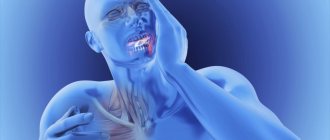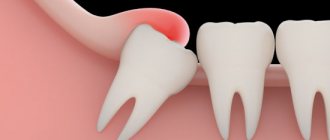When the bone behind the ear really hurts , most of us are in no hurry to go to the doctor, but try to help ourselves at home. But a timely visit to a specialist and competently prescribed treatment could significantly improve the situation and hasten the onset of recovery.
The danger of pain in the bone behind the ear is that it can be caused by a number of unfavorable factors. And the treatment of all these diseases may differ significantly. Therefore, it is so important to promptly seek help from a professional and find out the cause of the disease.
Attempts at self-treatment may be unsuccessful. A person may begin to treat one disease, while in fact the cause of ear pain lies in something completely different. As a result, this leads to the loss of precious time and the development of all kinds of complications.
What are the possible reasons
The anatomical location of the hearing organ and the adjacent lymph nodes, as well as its proximity to the brain, contributes to the rapid spread of the inflammatory process and increases the risk of complications.
Pain in the area of the bone behind the ear can be of various types. Unpleasant sensations can appear on one side or on both sides at the same time.
The most common causes of pain in the bone behind the ear are:
- Inflammation in the ear - otitis media. It can be external, middle and internal.
- The inflammatory process of the parotid lymph nodes is lymphadenitis.
- Mumps is a type of airborne infection.
- Development of cerumen plug in the ear canal.
- Inflammation of the paranasal sinus located in the temporal bone - acute or chronic mastoiditis.
In addition to inflammatory diseases, pain in the bone behind the ear may be caused by exacerbation of cervical osteochondrosis or trigeminal neuralgia.
Etiology of the phenomenon
Intoxication of the body can occur both due to external damage or inflammation, and due to internal formations. Painful sensations sometimes change their location. There may be a headache behind the ear, or the pain is localized above the hearing organ itself
In addition, the pain syndrome can have an increasing or decreasing character, which is also important for diagnosis
Another type of disease and accompanying pain is associated with tissue damage of a pathological nature. A striking example of this is purulent formation. A similar lesion is localized directly in the ear, but the pain is radiated to the head. In such cases, it is necessary to find the source of pain, since rupture of the purulent sac threatens blood poisoning. The pain in the head is sharp and throbbing, and it can also increase depending on the position of the body.
Inflammatory process in the ear
Most often, the bone behind the ear hurts when an inflammatory process such as otitis media develops. Children are most often affected by the disease. In addition to pain, general body temperature may increase and tinnitus may occur. A characteristic sign of such a disease may be a sharp increase in pain in response to pressure on the tragus of the ear. Often this complication is observed in a child after suffering from a runny nose or sore throat.
If the disease is severely advanced, serous or purulent discharge may flow from the ear.
If the inflammation is not acute - the pain in the ear is moderate and the body temperature does not rise - you can try to help yourself at home. For this purpose, a dry warming compress is applied to the ear area; the affected area must be kept warm at all times.
In the event that inflammation is at the very initial stage, usually such simple home measures are enough to stop the developing pathological process.
However, if the pain does not go away for more than two days and the body temperature rises, the neck and head begin to hurt, and liquid discharge appears from the ear canal, you should immediately consult a specialist. Under no circumstances should you try to take antibacterial drugs on your own. If purulent discharge flows from the ear, this is a direct contraindication to any thermal procedures. In addition to treating the ear, it is also necessary to treat the cause of otitis media - a sore throat or a viral infection.
Neck pain: what to do?
Neck pain caused by some mechanical cause may go away within a few days. If you are sure that the pain in your case is due to the fact that your neck was simply cold or you turned it sharply, try holding your neck in gentle warmth. It is also recommended to ensure a reduction in static load on the neck muscles and a comfortable head position during sleep. However, if the pain is prolonged or severe, you should consult a doctor. Self-medication will be ineffective, because before starting treatment, it is necessary to make a diagnosis. For neck pain, it is very important to undergo instrumental examination methods, in particular, radiography or, even better, computed tomography of the cervical spine. This will make it possible to distinguish “banal” osteochondrosis, for example, from tumor diseases.
Other inflammatory processes
Pain in the bone behind the ear can be caused by inflammation of the mastoid process of the temporal bone and the paranasal sinus, which is localized in the same bone - mastoiditis. This inflammation may be the result of previous otitis media.
A characteristic symptom of mastoiditis is severe pain in the bone located behind the ear. The patient may feel discomfort on one side or both. The pain is accompanied by high body temperature and signs of general intoxication - headache, malaise, aching joints. Purulent contents may leak from the ear canal. On palpation, the bone is perceived as softened.
An equally common inflammatory process that causes such pain is damage to the salivary gland - sialadenitis. The disease can occur as a result of non-compliance with the rules of oral hygiene or in the presence of a chronic source of infection - sore throat or caries. The process can also be one- or two-way. As a rule, symptoms of general intoxication do not develop with sialadenitis. Pain and slight swelling appear behind the ear. In the future, pain in the jaws may occur when talking or chewing.
Treatment options and complications
Correct diagnosis means effective treatment and favorable prognosis!
It is impossible to unambiguously determine the method of treatment without establishing an accurate diagnosis. That is, the therapeutic method is prescribed based on the cause of the headache:
- if the cause is a viral or bacterial infection, it is necessary to take antiviral drugs and antibiotics (Amiksin, Laferobion, Amoxiclav, Albucid)
- if your head hurts because of a tooth, then you need to visit the dentist and fix the problem
- for osteochondrosis, massages and the use of local drugs are necessary, the action of which is aimed at the regeneration of osteochondrosis tissues
- if your head hurts due to inflammation of the lymph node, then you need to take a drug that increases the immunity and protective functions of the body
During the treatment of any pathology, dietary nutrition, smoking cessation and alcohol consumption are required. The doctor prescribes the exact medications, but self-medication is highly discouraged, as this can aggravate the situation.
More information about mastoiditis can be found in the video:
As for prognosis and complications, it is difficult to speak in general terms without an accurate diagnosis. The only thing that can be said unequivocally is that the sooner the cause is determined and treatment begins, the greater the chances of avoiding the development of complications.
In medical practice, there have been many cases where patients self-medicated and treated a cold while they developed an oncological tumor.
There are no preventive methods against headaches. You can only protect yourself from possible pathologies. To do this, it is necessary to undergo a medical examination by specialists annually (1-2 times) in order to identify the disease at an early stage.
In addition, it is important to pay special attention to the immune system. It is important to adjust your diet, avoid fatty, salty, sweet and spicy foods. Introduce more grains, fresh berries, herbs, fruits and vegetables into the menu
Introduce more grains, fresh berries, herbs, fruits and vegetables into the menu.
Noticed a mistake? Select it and press Ctrl+Enter to let us know.
According to statistics, cephalalgia is rarely caused by diseases of the brain. In most cases, it occurs as a result of decreased vascular functionality, nerve damage, and pathological processes in the ENT organs. But this does not mean that there is no cause for concern. If you have a severe headache on the right side of the ear, or the symptom appears with enviable regularity, it is necessary to carry out a diagnosis under the supervision of a specialist. An alarming sign is an increase in symptoms when changing body position or external conditions, for example, temperature changes.
Neurological diseases
Quite often, pain behind the ear can be caused by inflammatory-dystrophic changes in the cervical spine - cervical osteochondrosis. In this case, thinning of the intervertebral disc and pinching of soft tissues between the vertebral bodies are observed.
Pain behind the ear with osteochondrosis may be accompanied by a feeling of muscle stiffness and a strong crunch in the neck. Clinical signs of cervical osteochondrosis are very often mistaken for symptoms of a number of other diseases.
For diagnostic purposes, X-rays and computed tomography of the cervical spine are performed. Treatment is prescribed by a neurologist.
The bone behind the ear can also become sore with trigeminal neuralgia. In this case, severe excruciating pain affects only one side of the face and neck. In this case, the patient is prescribed anticonvulsants, as well as B vitamins.
Treatment
After diagnosis, depending on the causes of pain in the ear area, the specialist prescribes treatment. Therapy may include the following medications:
- prescription muscle relaxants;
- antidepressants;
- steroid drugs and blockers;
- antisecretory drugs;
- antibiotics.
When the cause of the illness is neurological diseases, the patient is shown:
Surgical intervention is required in rare cases, in the presence of serious pathologies, when other methods are ineffective. In such a situation, the following types of surgical treatment can be performed:
- stimulating the occipital nerve to block signals sent to the brain;
- microvascular decompression, which is done to change the location of the vessels that compress the nerve endings, which leads to pain.
As a rule, when treating headaches in the ear area, surgical intervention can be avoided, and the patient feels relief after taking the prescribed medications and performing the necessary procedures.
Causes of neck pain on the left side
It becomes clear that the area around the neck on the left can hurt for many reasons. It is worth learning more about each disease and determining the symptoms in order to roughly understand what triggered the development of pain and discomfort in the neck.
Osteoarthrosis and osteochondrosis
Osteochondrosis manifests itself in the fact that the cartilage tissue of the spinal column gradually begins to deteriorate. The intervertebral discs become thinner, the distance between them decreases, and nerve roots are pinched. Osteoarthritis also affects the joints of the spinal column.
Neck muscle damage
One of the most common cases of neck pain is damage to muscle tissue. If you hit yourself or simply overstrain your muscles by being in a not very comfortable position for a long time, or get too cold, inflammation may begin, accompanied by pain and sometimes fever.










